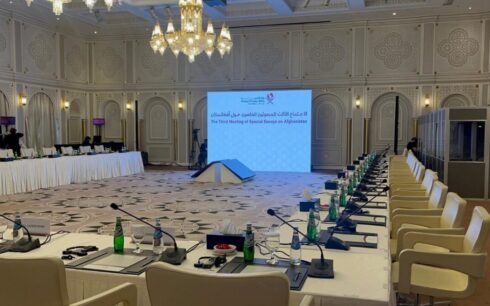KABUL, Afghanistan — Since the Taliban’s takeover in August 2021, Afghanistan has received $6.7 billion in humanitarian assistance, with contributions peaking at nearly $3.3 billion in 2022, according to a new report from the United Nations Office for the Coordination of Humanitarian Affairs (OCHA).
The report provides an overview of critical achievements made possible by this funding and warns of potential setbacks should funding levels decline.
The surge in humanitarian needs has been attributed to a severe economic collapse following disruptions in the banking sector, the abrupt cessation of bilateral development aid, a sharp increase in food insecurity and poverty, and the country’s worst drought in three decades. In 2023, these factors drove the number of people requiring humanitarian assistance to an unprecedented 29.2 million. While Afghanistan has seen a stabilization in food security and poverty levels, OCHA highlighted that the country remains highly vulnerable to natural disasters, climate change, and geopolitical shifts, all of which could exacerbate existing needs.
The report points to achievements made possible by humanitarian efforts, which have averted famine and significantly reduced the number of people living under Integrated Phase Classification (IPC) levels 4 (emergency) and 3 (crisis).
The report says that public health interventions have prevented the spread of waterborne diseases, expanded access to critical health services, and improved malnutrition treatment in underserved areas. Previously contaminated lands have been reclaimed for use in housing, agriculture, and education, bolstering livelihoods in some of Afghanistan’s most impoverished areas, the report states.
Additionally, the absence of active conflict has allowed humanitarian actors to access remote areas previously beyond reach, uncovering new needs and allowing aid to flow into previously underserved regions, the report says.
The report also says that despite these advances, Afghanistan remains a “protection crisis” at its core, with increasingly restrictive policies targeting women and girls.
OCHA emphasized that humanitarian organizations have become the primary liaison with the Taliban-controlled de facto authorities, facilitating operational and strategic dialogue.
Since 2021, 71 out of 392 Taliban directives directly restricted Afghan women’s involvement in humanitarian work, according to UN. Despite these obstacles, aid groups have taken extensive measures to ensure that Afghan women remain part of the humanitarian response, from on-the-ground assessments to the delivery and monitoring of services, the report says.
According to the report, To navigate Taliban-imposed restrictions, humanitarian agencies have implemented programmatic adaptations, such as establishing gender-segregated office spaces, creating separate distribution points for women, covering travel costs for male chaperones (mahrams) accompanying female staff, and training female community volunteers to conduct outreach directly in women’s homes.
However, OCHA warned that the progress achieved could quickly unravel if funding decreases.
“While this impact analysis highlights what the humanitarian community can do when it receives the requested level of funding, this will not be possible to maintain should funding levels decrease,” the report states. A drop in resources would likely expose affected populations to renewed suffering and harm, undermining the gains made over recent years.





